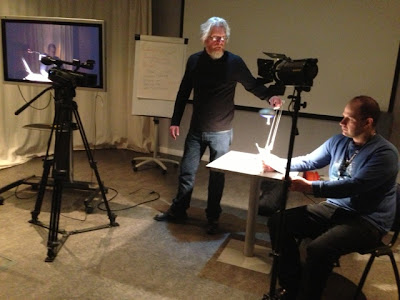The most obvious purpose of film lighting is to illuminate the actors, sets and props within a given scene. Without proper illumination, the audience will literally be left in the dark. Film lighting techniques can define the genre and atmosphere of the project. For example, documentaries depend on natural light when interviews are taking place outside. Scripted films may require a sharper look and may require artificial lighting techniques.
Reflecting light is an important tool in the film lighting process. The fill light is typically placed lower than the key light in order to reduce shadows on the subject being filmed. Directors have the choice of using either an actual lamp or a reflector such as a bounce card as the fill light. Either way, the fill should reflect light back onto the subject in order to manipulate shadows.
We are start! Before we try many ways make the light, but there are all not good. And then teacher come here, teach us make the lights off the wall. It is amazing.
Bounce your brightest lights off of the wall or ceiling to have your light cover a large area. This lighting scheme is most useful for situations when the cinematographer has to move around the set. Bouncing light simply raises the light levels of an entire room so that everyone in it can be evenly illuminated.







没有评论:
发表评论